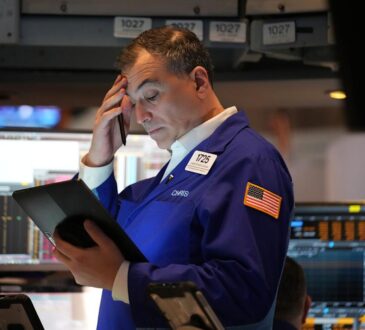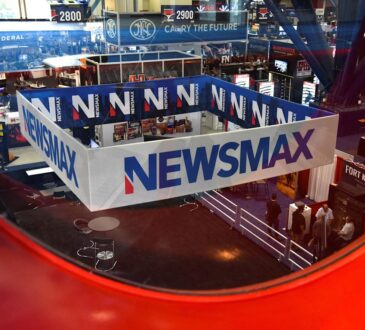
The S&P 500 is racing higher once again after upbeat news about inflation and interest rates, though some top strategists believe the rally will soon be derailed.
US stocks soared on the back of that news. The growth-focused Nasdaq Composite reached another record, as did the S&P 500, which is now up 14% in 2024 after a 24.2% surge last year.
Beware of the coming correction
But instead of popping champagne, several market pundits are leery about a drawdown.
Adam Phillips, the managing director of investments at EP Wealth Advisors, said in an interview that US stocks are weaker than they look. A handful of mega-cap growth stocks is generating most of the S&P 500’s gains, he noted, and that narrow market breadth is masking deficiencies in dozens of smaller firms. If those leaders pull back, investors may get a jarring wake-up call.
“Just over the last month, we’ve seen the S&P 500 is up close to 3%, but over 60% of that return is coming from Nvidia,” Phillips said earlier this week. “And if you look at the S&P 500 on an equal-weighted basis, it’s actually produced a negative return over the last month. And so I think that’s really, really important, to just look underneath the hood for signs of market health. It tells us that the market’s not, potentially, as healthy as it could otherwise appear.”
Until a wider set of stocks outperform, Phillips believes skepticism about this rally is warranted. Companies can catch up to technology giants by posting outstanding earnings, but they won’t get an opportunity to do so before the second-quarter earnings season starts in mid-July.
In the meantime, Phillips is troubled by enthusiastic sentiment from investors despite a shortage of significant market drivers and mixed economic data.
The idea of softer economic growth concerns Anthony Saglimbene, the chief market strategist at Ameriprise Financial. Slower inflation is encouraging, though it’s also reasonable to draw a glass-half-empty conclusion from May’s price growth data: the US economy isn’t running hot.
“If we get an economy that looks like it’s slowing more aggressively, which may suggest the Fed is offsides a little bit or maybe not paying attention to the slowing growth trends, then I think we could see another 5% or 10% correction,” Saglimbene said in a recent interview.
Higher-for-longer interest rates are bringing down inflation, but they’re also damaging the economy, Saglimbene said. That’s why rate cuts can’t come soon enough.
“We’re just accumulating more pain in the economy the longer rates stay at these levels,” Saglimbene said. And so when you’re looking at backwards-looking data like employment, like inflation, I think it’s going to require a much more nuanced response from the Fed — kind of like what the ECB is doing right now to manage growth when interest rates are at these high levels.”
However, investors shouldn’t sweat the forthcoming pullback, in Saglimbene’s view.
The next drawdown will likely be modest, as those who’ve missed out on this rally would likely jump at an opportunity to enter the market. And there’s plenty of dry powder on the sidelines, Saglimbene noted, as the $6 trillion in money market accounts is double the long-term average.
Whether investors should jump into stocks in light of conflicting economic data, elevated rates, and stretched valuations is another story.
Gene Goldman, the chief investment officer for Cetera Investment Management, noted that the S&P 500 is trading at a forward earnings multiple of 21x, which is ambitious in this backdrop.
“High valuations — you need low interest rates, you need low inflation, and we have neither right now,” Goldman said in a recent interview. “So you’re pricing in absolute perfection.”
Like Phillips, Goldman pointed out that growth stocks with sky-high expectations are supporting the market’s returns and valuation — even though they often perform poorly in election years. Unless mega-cap stocks keep defying gravity, he’s counting on a sizable pullback this summer.
Any market correction would likely be brief, Goldman said. He said the S&P 500 could retrace to its 200-day moving average, which is just above 4,800. An 11.5% pullback wouldn’t be fun, but the investment chief noted that it would be less than the average drawdown of 14.2%.
The bull case for continued gains
However, some strategists Business Insider recently spoke with shook off the idea that investors should be wary.
Shep Perkins, an investment chief at Putnam Investments, expects US equities to gradually climb what’s been called the “wall of worry” since many investors are still skeptical of this rally. Crucially, earnings growth has resumed, which should support further gains.
“S&P 500 earnings — after a period of flatness over the last year or so — has started to reaccelerate,” Perkins said. “And that’s usually a good ingredient for higher stocks.”
Garrett Melson, a portfolio strategist at Natixis Investment Managers, said the S&P 500 could add another 10% to its year-to-date gain as investors who’ve been light on stocks admit defeat.
“FOMO, I think, comes back into the picture here,” Melson said. “But from a fundamental and a technical perspective, I still think the bias is for prices to keep moving higher.”
10 ways to invest despite drawdown risk
Even those who are preparing for a pullback have parts of the market that they’re bullish on.
Saglimbene is sticking with his overweight call on US equities due to the nation’s strong growth, despite the risk of a near-term hiccup. Large caps are more attractive than mid- and small-sized stocks as long as interest rates stay elevated, he added.
As for sectors, Saglimbene is bullish on companies in the consumer staples sector since the group has defensive attributes and pricing power, and he’s also selectively bullish on technology stocks since they’ve posted remarkable growth.
Both Saglimbene and Goldman highlighted equities in Europe and Japan, which have performed admirably this year and should hold up if US stocks falter. Goldman also highlighted value-oriented stocks and small caps, as both have relatively attractive valuations.
Phillips is most bullish on stocks in less flashy sectors like energy and industrials. Energy firms generate tons of free cash flow and net income, plus they’re a hedge against risks like inflation and geopolitical issues. The latter is true of defense firms within industrials as well. Industrials are also a primary beneficiary of increased infrastructure spending, he said.



